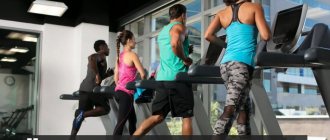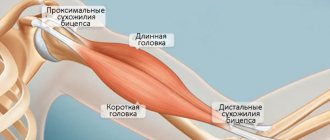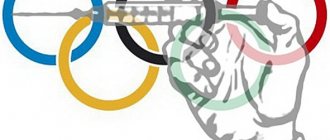Low-impact workouts for weight loss are one of the most popular requests among exercisers at home. We offer you 10 interval cardio workouts without jumping and running from Ekaterina Kononova in Russian, which will help you lose weight, strengthen muscles and get rid of extra centimeters on your arms, stomach, waist and hips.
The presented workouts take place without impact exercises , but due to the cardio pace and high heart rate, you will burn fat, strengthen the heart muscle, and enrich the blood and cells with oxygen. Such programs are especially suitable for beginners in fitness, people with significant excess weight and those for whom jumping and running are contraindicated due to joints, varicose veins, heart problems, etc. Also, this selection of low-impact workouts from Ekaterina Kononova will be relevant for those who cannot make noise at home, so exercises with jumping are excluded.
Attention! The workouts are offered without warm-up or cool-down; be sure to do them yourself.
Warm-up:
Hitch:
Features of cardio training without jumping from Ekaterina Kononova:
- Workouts last 20-30 minutes (excluding warm-up and cool-down)
- You will need minimal sports equipment
- These are interval classes that include exercises to burn fat and tone muscles throughout the body.
- You will not only lose weight, but also get rid of flabbiness and looseness in your body.
- The training is accessible and effective, so it is suitable for both beginners and experienced trainees.
- You can strengthen your heart muscle and improve physical endurance.
- All workouts are performed according to a very similar scheme, differing only in the set of exercises.
Please note that in these programs, Ekaterina also offers strength exercises for muscle tone (including dumbbells), but due to the fast pace and frequent changes of exercises, the class is held in interval cardio mode with a high heart rate. This means you will burn fat and strengthen muscles. This is not pure cardio training, where you will be in constant motion. But for losing weight and improving body quality in a short time, interval training is the best option.
If you are a beginner, you can make stops or increase the rest time between exercises. You can also perform the exercises without dumbbells or at a slower pace. Most programs will be effective for advanced practitioners. Catherine suggests a lot of exercises with lunges and squats, so if you have serious knee problems, these videos will not be suitable for you.
Benefits of running for cardio
Running is an excellent morning boost of energy for the whole day, and evening workouts can relieve the burden of fatigue and refresh you after a hard day of work. Cardio running exercises can strengthen the entire body, make the body more fit and slender, and also work well on the cardiovascular system and musculoskeletal system.
There is also the option to exercise on a treadmill at home or somewhere in the gym. Such training is considered less useful, since there is often not enough oxygen, so it is harder for the lungs to work, and there is a greater load on the heart and joints. To correct this situation or make it more acceptable, you need to ventilate the room before starting your workout and leave the windows open to allow air to circulate throughout the room. It is important not to create a draft, so as not to catch a cold.
Let's take a closer look at who should do cardio training and why:
It's never too late to start running
For young people, such training will help maintain health and will be an excellent prevention of various diseases, and for the older generation, running will allow them to resume the active functioning of the cardiovascular system, preventing heart attacks and strokes.
Cardio is rarely used for weight loss as the only mechanism of action, since such training allows you to get rid of excess calories directly only during exercise. Strength exercises, on the contrary, give the muscles the necessary load, which accelerates the metabolism and allows you to burn fat even after training. Therefore, if you want to have a sculpted body, then it is better to perform cardio exercises together with strength training. Thus, you can effectively influence the body from different angles.
Running is one of the best methods for developing endurance. Moreover, this indicator can be influenced by both long-term training at an average pace and interval training with high intensity. Together with endurance, you can develop speed qualities during cardio exercises.
Cardio training is great for recovery and relieving muscle and joint pain. Many athletes also use them for warming up to warm up the whole body and prepare for the upcoming load.
Types of cardio by intensity:
Low- and medium-intensity cardio (55-75% heart rate):
- low load on joints (knees) - ideal for beginners and those who are very overweight
- need to be done for a long time, because calories will only be burned during exercise
- you can use such workouts for active recovery after strength training
High-intensity cardio training (70-85% heart rate)
- burn more calories and are considered more effective for weight loss
- better speed up metabolism
- take less time
- not recommended after strength training (may negatively affect muscle recovery)
- not suitable for beginners
For maximum fat loss, it is best to alternate strength days and cardio days. If you can’t do a separate day of cardio, then you can do cardio after strength training.
Which cardio exercises to choose for running?
All cardio running exercises can be divided based on performance indicators. The choice depends on the athlete’s level of training, his skills, endurance and, of course, desire. Let's look at several types of cardio training:
Low intensity
Such loads include the widespread jogging . Such training allows you to maintain an optimal weight, they can also influence the reduction of pain in muscle tissue, and jogging can act as a recovery during the completion of an intense exercise. Even a slow pace accelerates the cardiovascular system, causing blood to actively circulate throughout the body, which has a beneficial effect on the health of all organs.
To maintain muscle mass during such workouts, you can consume sports nutrition that contains additional amino acids and proteins. Since the intensity of jogging is low, it is necessary to monitor your heart rate and keep it within 60% of the maximum allowable level. The training can last up to 30-50 minutes; a good sign is that the athlete gets wet while running, but not much.
Medium intensity
This type of training involves maintaining a pace intermediate between a fast sprint and a measured jog. The main goal here is to perform active work throughout the entire lesson without slowing down. While running, you need to monitor your breathing and pay special attention to your pulse: the optimal level is 70%.
Such training forces the body to take energy not only from fats, but also from carbohydrates. To maintain muscle tone, in this case, proteins can be added to the amino acids. For greater effect, you need to exercise for at least 30 minutes, and you should make sure that the pace does not break and is maintained throughout the entire workout. After 5-10 minutes of running, increased sweating begins. This must be taken into account, so you should always have a bottle of water with you in order to replenish the water balance in the body in time.
Interval Cardio
Interval training can include both jogging and sprinting. The first option requires less concentration and allows you to practice without fear of a possible breakdown. During normal running, slight accelerations are made, then the original pace is returned to restore, and then the pattern is repeated. The main goal is intense training, which will accelerate your metabolism, maintaining this effect for a long time even after exercise. Physiologists say that short interval running may be even more beneficial than two jogging sessions.
Sprinting is high-intensity cardio exercise at the limit of your capabilities. Between approaches there is active recovery during walking. A good indicator would be 60 meters in 15 seconds; there can be about 20 such sprints in one session. The anaerobic nature of training requires fuel from carbohydrates, so it is important to eat foods high in this organic substance both before and after running. Also, do not forget about the same amino acids and proteins, and drink more water.
Cardio training can be done every day, while alternating exercises with varying degrees of intensity. That is, if one day involves high-intensity training such as sprinting, then the next it is better to give preference to jogging so that the body can recover properly. Cardio running exercises are best selected individually. What benefit will there be if you do something that causes discomfort? Sprinting is not for everyone, just as not everyone likes long runs at the same pace. It is better to first try all the exercises on yourself, not on one day, of course, and then draw up a training program for the whole week, based on the recommendations described above.
https://youtu.be/w0aAyVwFdZE
Monitoring heart rate during weight loss exercises at home
Monitoring your heart rate is important for any type of physical activity, but when working in the cardio zone, it is especially important. Heart rate is divided into 4 zones:
Heart rate is divided into 4 zones:
- recovery (50% or less);
- fat burning (50-5%);
- target or aerobic exercise (65-85%);
- anaerobic or threshold load (85-100%).
To determine heart rate, there is a simple formula that sets individual limits for a person. It looks like this:
- 220 minus age = X;
- lower limit: Y=X*0.65;
- upper limit: Z=X*0.85.
For a visual example:
- 220 minus 40 (age) =180;
- lower limit: 180*0.65=117;
- upper limit: 180*0.85=153.
To track your heart rate during cardio workouts, you will need a heart rate monitor. It can even be installed on your smartphone and synchronized to track heart rate fluctuations to achieve better results.
Photo 4. Wrist heart rate monitor from the manufacturer Polar. The device resembles an ordinary electronic watch.
Cardio program for exercise therapy and older people
At any age, it is important to lead an active lifestyle, and this means proper nutrition and physical activity. The main recommendation for older people is to conduct classes four times a week for half an hour a day
The main recommendation for older people is to conduct classes four times a week for half an hour a day.
One of the training programs:
| Exercise type | % of maximum heart rate | Time, min |
| Warm-up (walking in place) | 60—65 | 3 |
| Elliptical trainer | 65—70 | 3 |
| Walking on toes and heels | 65—70 | 1 |
| Walking | 60—65 | 1 |
| Rowing machine | 70—75 | 3 |
| Lunges with rotation | 70—75 | 1 |
| Walking | 60—65 | 1 |
| Cool down (chair push-ups) | 65—70 | 2 |
These exercises are also suitable for exercise therapy, it is only important to take into account the specifics of the disease of a particular person
Briefly about the effectiveness of aerobic training at home
Before giving specific exercises, I will make a brief digression about what cardio training is and why it is needed.
Aerobic exercises (cardio exercises) are exercises that use energy obtained by your body through aerobic glycolysis. That is, energy is released when carbohydrates and fats are broken down in the presence of oxygen.
In terms of value for the body, proteins come first, then fats, and then carbohydrates. Accordingly, it will be carbohydrates that he will consume first. And until he spends it, he won’t start eating fats.
In order for the fat-burning effect of aerobic training to manifest itself, it must last at least 20-30 minutes. During this time, the glucose accumulated in the muscles will be used up, and your body will have no choice but to part with the subcutaneous fats carefully stored for a rainy day.
How long should a cardio workout at home be? My answer is: if you haven’t worked out before or you’ve had a long break, you shouldn’t train for more than an hour at once. In other words, 45-60 minutes will be enough for you. For trained participants, the training can be extended to 90 minutes. There is no need for more - you will create too much stress for the body, which, of course, will not lead to anything good.
Fat burning workout without jumping and running: a set of exercises
At first, take your time: perform the exercises at your own pace, even if in the 20 seconds allotted for each movement, you will not have time to do so many repetitions - it is important to master the correct technique. On the 3-4th workout, it makes sense to increase the speed of movement by performing more repetitions in 20 seconds
Swing your legs
Stand straight, place your feet shoulder-width apart. Transfer maximum body weight to your right foot, move your left foot to the side and lift it to the level of the pelvis, spread your arms to the sides. Work the muscles of your legs, abs, buttocks and arms. Then lower your left leg to the floor, transfer your body weight to your left foot and lift your right leg to the right. Return to the starting position. This will amount to one repetition. Complete the required number of them.
Leg raise with rotation
Stand straight, place your feet shoulder-width apart. Stretch your arms up. Place your maximum body weight on your right foot, bend your left knee and pull it towards your stomach. At the same time, lower your arms down to the sides of your left foot. Work the muscles of your legs, abs, buttocks and arms. Then place both feet on the floor, extend your arms up, transfer your body weight to your left foot, bend your right knee and pull it towards your stomach. Place your hands on the sides of your right foot. This will amount to one repetition. Complete the required number of them.
Bent over crunches
Stand straight, place your feet hip-width apart. Smoothly move your pelvis back and lean your body forward, bend your knees slightly. Stretch your arms to the sides. Smoothly twist your body to the left, trying to touch the floor with your right palm. Work your abdominal, back and arm muscles. Then twist your body to the left, touching the floor with your left palm. This will amount to one repetition. Complete the required number of them.
Tilts
Stand straight, feet hip-width apart. Stretch your arms up. Lean your body forward and step back slightly with your left foot. Work the muscles of your abs, back, legs and arms. Do not increase the arch in your lower back. Then return to the starting position. After this, smoothly lean forward, stretching your arms, and step back with your right foot. Return to the starting position. This will amount to one repetition.
Lunge Bends
Stand straight, feet hip-width apart. Stretch your arms up. Lean your body forward while stepping back with your left foot. Then straighten up, continuing to stretch your arms up, and step your left foot forward, bending your knees slightly. This will amount to one repetition. Perform the required number of them in each direction.
"Climber"
Take a lying position, leaning on straight arms and toes. Do not increase the arch in the lower back, work the muscles of the abs, back, arms and legs. Bend your left knee and pull it towards your stomach. Then return to the starting position, bend your right knee and pull it towards your stomach. This will amount to one repetition, complete the required number of repetitions.
Lifting and turning legs
Lie on your right side, extend your right arm behind your head. Place your left palm on the floor in front of you at stomach level, lean on it. Bend your legs slightly. Fix the right one on the floor. Lift your left one (without straightening) up and turn your knee towards the ceiling, with your toe stretching away from you. Return to the starting position. This will amount to one repetition, perform the required number in each direction.
Swing your legs while lying down
Lie on your right side, extend your right arm behind your head. Place your left palm on the floor in front of you at stomach level, lean on it. Legs straight, toes pulled towards you. The pelvis is fixed, the lower back is stable, the stomach is tucked. Smoothly lift your left leg as high as possible, then lower it onto your right. This will amount to one repetition. Do the required amount in each direction.
Diagonal crunches
Lie on your right side, place your left hand behind your head. Rest your right palm on the floor. Working the muscles of your legs and abs, simultaneously lift your legs and body above the floor. Then slowly lower yourself to the floor. This will amount to one repetition. Complete the required number of them.
Leg spin
Lie on your back, stretch your arms along your body. Bend your knees, place your feet on the floor. Lift your right leg off the mat and, keeping your knee slightly bent, rotate it clockwise at the hip joint. Describe one circle - this will make one repetition. Do the required amount in each direction.
Correct running technique
Running in the morning, afternoon or evening to lose weight is all the same, but you need to do it correctly! Of course, it is better to do energy-consuming and tiring runs in the first half of the day, and leave easy runs for the evening, but the main rule is: “Run regularly.”
“Scientists have proven that regular jogging extends life by 5-6 years, strengthens the heart, speeds up metabolism and metabolic processes, and also helps fight stress and relieve internal tension.”
Quick tips for beginner runners:
- You should run in light and comfortable clothes ; To prevent you from feeling too hot while jogging, add ten degrees to the outside temperature and dress accordingly;
- shoes should fit well , not squeeze or dangle on the foot;
- try to run, landing with your entire foot , without overloading only the toe or heel - this will help reduce knee injuries;
- breathe evenly , inhale air through your nose and exhale through your mouth;
- keep your hands close to your body, do not lean too far back or forward;
- Don't fast before running : no matter how much you run, a carbohydrate deficiency will not help you burn fat, but the lack of an energy source will force your body to use muscle tissue to power cells; An hour or two before a run, you should eat a full meal, and before the start of the workout itself, you should eat fast carbohydrates.
How to build a lesson
- Start with a short warm-up. For example, this one.
- Build your workout on a circular basis: perform each exercise for 20 seconds
, without resting, move on to the next movement. After completing the circuit, rest for a minute, then start all over again. “It’s optimal to start with three circles and, if possible, gradually increase their number,” advises Alexandra Chuprakova. - Finish the session with stretching. For example, according to this scheme.
- Do this program 3 times a week. “I would also recommend walking at a fast pace every other day, this will speed up the weight loss process,” sums up Alexandra Chuprakova.
To complete the complex you only need a mat.
Low impact workouts without dumbbells
Cardio workout without jumping No. 8 (20 minutes)
You don't even need a mat for this workout. You will find 10 exercises for the whole body, which are performed according to the scheme of 45 seconds of work and 15 seconds of rest in 2 approaches. We perform each exercise in two approaches.
Exercises: single-leg deadlift, pulse lunge + squat, single-leg plank walk, reverse squat lunge, swallow, squat bends, side kick on all fours, push-up + pelvis to the ceiling, table pose with leg raise, plank with touching the same hand and foot.
Cardio workout without jumping No. 9 (20 minutes)
In this workout, you will additionally need a stable chair; all exercises are performed with its participation. The training scheme is standard: 45 seconds work and 15 seconds rest, exercises are performed in 2 approaches.
Exercises: chair step, chair squat, Bulgarian lunge, chair push-up, knee-to-chest plank + swing, reverse triceps push-ups, chair fold, supine leg lift with pelvis lifted, side plank leg touch , double twists.
Cardio workout without jumping #10 (20 minutes)
This workout is also completely done with a chair, but here you will find more complex and interesting exercises. The training scheme is standard: 45 seconds work and 15 seconds rest, exercises are performed in 2 approaches.
Exercises: step onto a chair, squat onto a chair with a raised leg, side leg swing, step onto a chair + swing + lunge, hyperextension on a chair, semi-circle plank on a chair, reverse triceps push-ups, throwing your legs over a chair in a plank, abdominal crunch , oblique twists.











